Like to cruise groomed runs? Float through powder? Hammer chutes? Or ride the rails? The right snowboard for you is one designed for the terrain you prefer.
The learning curve on a snowboard is very fast, so if you're a beginner, you should consider buying for where you want to be and aim for a board that will accommodate improving skills.
Here are the main things to consider when shopping for a snowboard:
- Snowboard length: As a general rule, if you stand a board on its tail, the nose of the board should reach somewhere between your nose and chin. You can use size charts and recommended rider weights to get more precise.
- Types of snowboards: Your choices include all-mountain, freestyle, freeride, powder and splitboards. The right type of board depends on what type of terrain and snow conditions you plan to ride in.
- Snowboard camber and rocker: There are many different camber and rocker profiles to choose from. If you plan to ride fast on groomed runs, then a cambered board is a good choice. But for riding soft snow you'll probably want a flat, rocker, camber/rocker or flat/rocker board.
- Snowboard width: With the right width board, your boots will extend just slightly over the edges of the board. If they overhang too much, though, they could drag and make you lose control.
- Snowboard shape: Choose a directional board for high-speed carving, a true twin board for park and pipe use, or a directional twin for all-mountain riding.
- Other snowboard features: You can refine your search by considering things like sidecut radius, effective edge, board flex and base material.
Snowboard Length
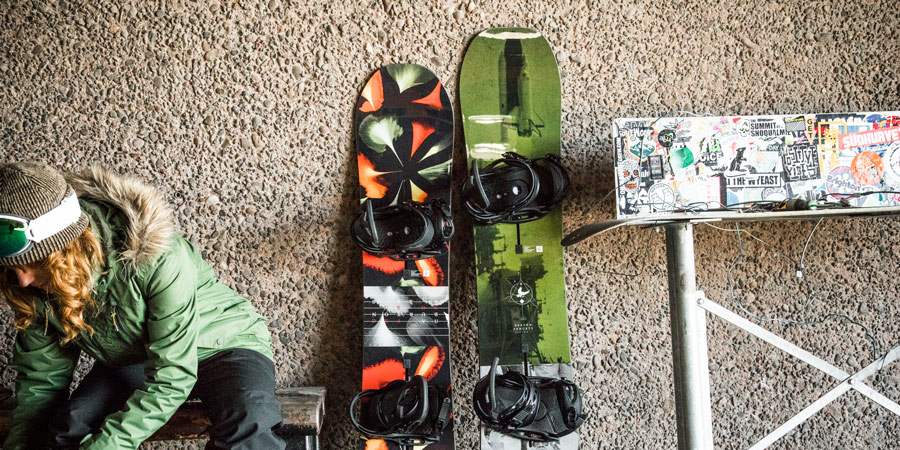
To choose the right length snowboard you'll need to consider your height and weight while also thinking about the type of snowboarding you plan to do.
When snowboarding was new on the scene, people would pick their board lengths by standing boards on their tails to see how tall they were in relation to themselves. If the nose of the board reached somewhere between their chin and nose, then it was deemed the right size. You can still use that method today, but it's more precise to use your body weight, which is what many snowboard manufacturers recommend. At REI, we list recommended rider weights in the spec charts of individual boards on REI.com product pages. For instance, you might see that a 158cm board has a recommended rider weight of 150-200 lbs.
The following size chart can also be used to give you a good idea of the right board length based on your weight:
Snowboard Size Chart
| Rider Weight (lbs.) | Snowboard Size (cm) |
|---|---|
| 110-120 | 128-136 |
| 115-130 | 133-141 |
| 125-135 | 139-147 |
| 135-145 | 144-152 |
| 140-155 | 149-157 |
| 150-165 | 154-162 |
| 160-175 | 159-167 |
| 170-185 | 160+ |
| 180-195 | 160+ |
| 190-205 | 160+ |
Once you have a general idea of length, considering the type of snowboarding you plan to do can help you decide to go longer or shorter. For instance, fast, aggressive riders often prefer a longer board. Park riders eager to hit lots of jumps and twists may want a very short board for easier maneuvering. And remember that there's a lot of personal preference in picking board length, so if you already know you like a longer or shorter board, that's perfectly fine.
Types of Snowboards
REI puts snowboards into five categories to help you find the right type of board for the style of snowboarding you do:
- All-mountain: best for any terrain
- Freestyle: best for the park
- Freeride: best for ungroomed snow in any terrain
- Powder: best for deep powder snow
- Splitboard: best for the backcountry
All-mountain
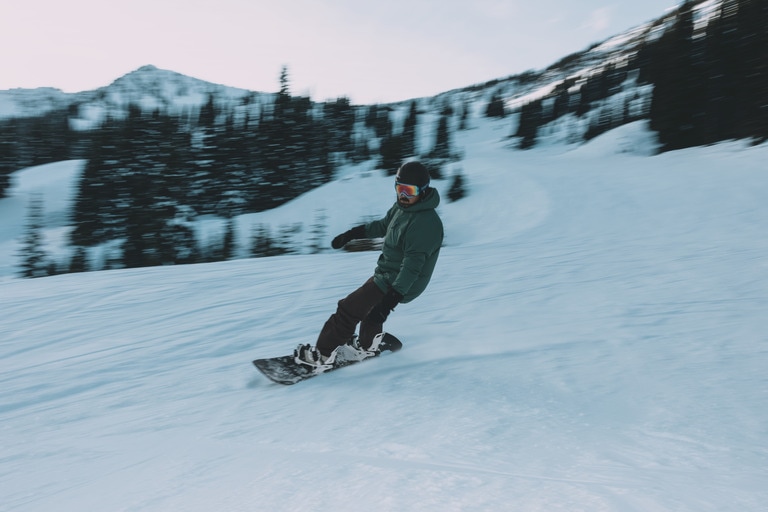
Best for any terrain and conditions. All-mountain snowboards perform anywhere on a mountain—groomed runs, backcountry, even park and pipe. They may be directional (meaning they are intended to be ridden primarily in one direction) or twin (for riding switch, meaning either direction).
Most boarders ride all-mountain boards. Because of their versatility, all-mountain boards are good for beginners who are still learning what terrain they like.
Freestyle
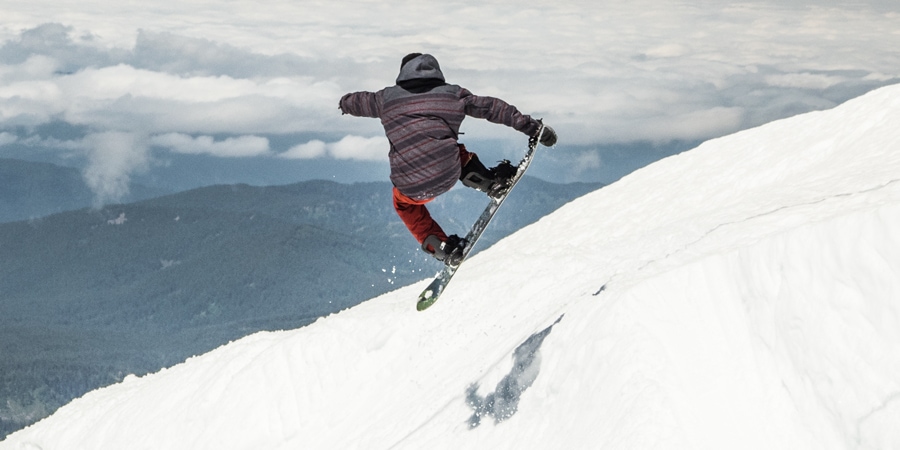
Best for a playful ride in and out of the park. Freestyle snowboards are light, short and flexible with twin tips. They are good for riders who want a lively ride anywhere on the mountain, or those who like to push their limits in terrain parks; they're not so good for stability or cruising fast on hard snow.
Freeride
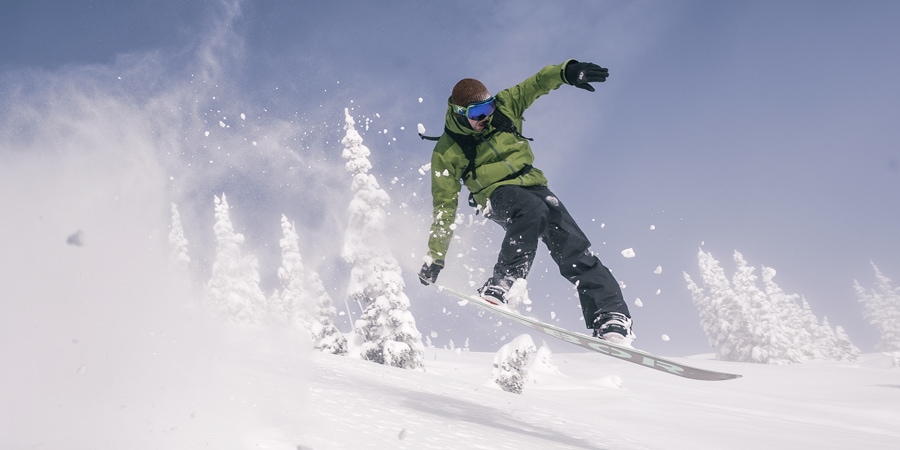
Best for ungroomed snow in any terrain. Freeride snowboards are designed for adventurous riders who spent most of their time off groomed runs. They are often directional boards, meaning they are meant to be ridden with one end always facing downhill. The flex of a freeride snowboard is usually stiffer than that of a freestyle board.
Powder
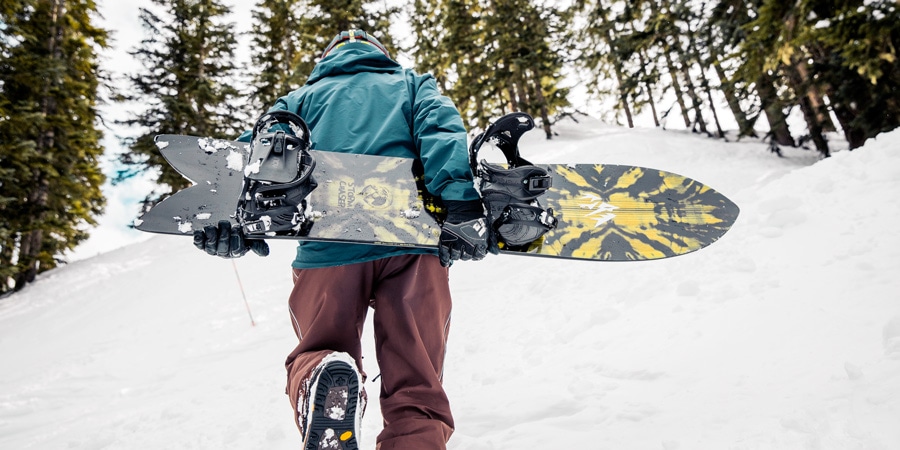
Best for deep powder snow. Everything about a powder snowboard is designed with deep snow in mind, from the shape of the nose and tail to the flex of the board and the location of the binding inserts. Many powder boards feature rocker for better flotation.
Splitboard
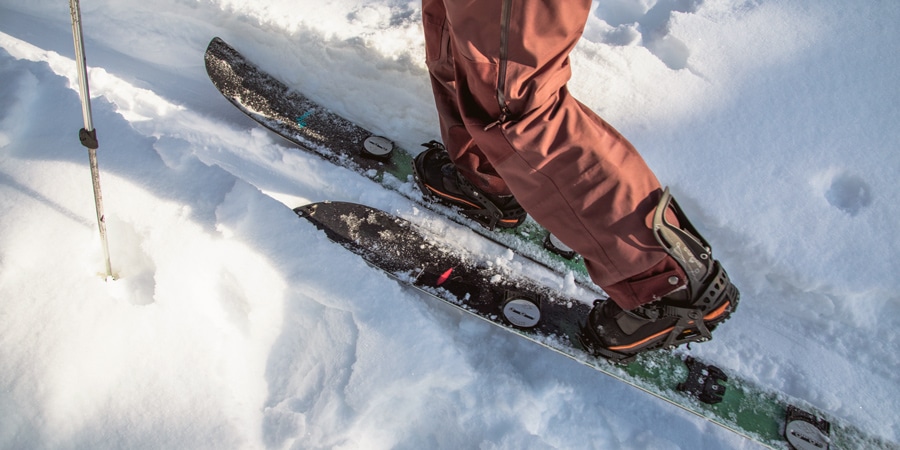
Best for climbing in the backcountry. These backcountry-specific boards split in half to create two skis and permit climbing on untracked backcountry slopes. You later reconnect the halves and ride downhill.
It's a great design for adventurous backcountry devotees who have the knowledge, skills and confidence to safely explore unpatrolled slopes. You'll also need climbing skins and a split kit, usually sold separately.
Snowboards by Gender and Age
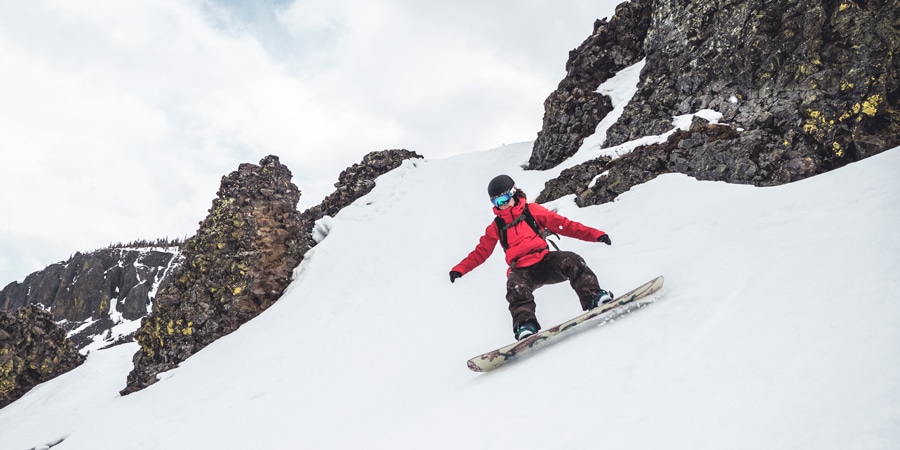
Women's Snowboards
Women-specific boards have narrower waist widths (to match the frame and stance of a smaller person with smaller feet), and slightly less camber and a softer flex (engineered for the way a smaller person drives energy into a board). Smaller, lighter men may find it useful to look at women-specific boards.
Taller women, particularly those with a boot size of 9 or higher, may find it useful to look at some boards in the men's category.
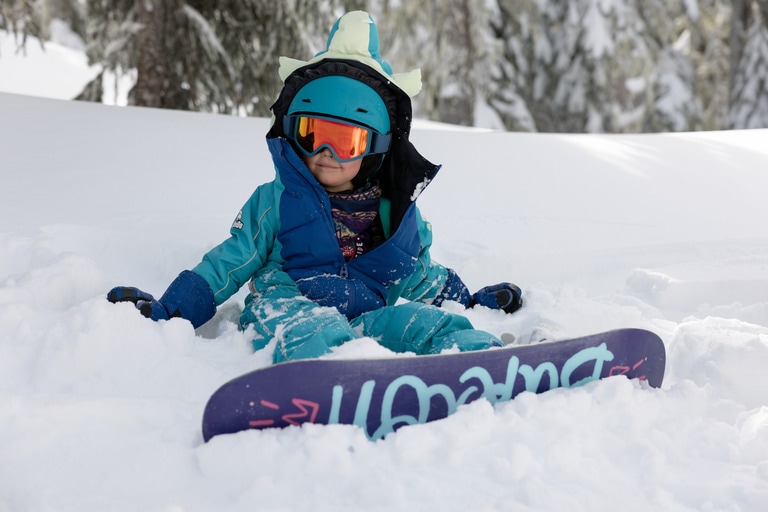
Kids' Snowboards
While kids grow fast, parents should avoid buying an adult board, hoping your child will grow into it. An oversized board can be unmanageable for a child and slow their skill development.
Snowboard Camber and Rocker
When you set a snowboard down on the snow and look at it from the side, you'll notice certain things about the shape. With some boards, you'll see that the middle rises off the snow. With others, you'll notice that the middle stays flat against the snow. This difference is the basic distinction between camber and rocker.
When you're shopping on REI.com, you'll see snowboards grouped into these categories:

Camber delivers a lively, stable ride and provides pop and responsiveness on hardpack or groomed runs, especially when powering out of turns. Experienced, speed-oriented riders favor cambered boards.

Flat (neutral, or no camber) boards are what they sound like: flat or nearly flat underfoot rather than cambered. They enable quick turns and maximum feel while increasing float.

Rocker (aka reverse camber) creates upturned tips and tails. The design excels in powder and when jibbing or riding rails in the park. Rockered boards are softer than cambered boards and tend to have a surfy feel that offers easy turn initiation, making them popular among novice riders. Experienced riders, though, can still coax powerful rides out of them.

Camber/Rocker boards combine these two profiles to provide the good edge hold of camber underfoot with the easy turning and flotation of rocker toward the tips and tails. Board manufacturers have hatched lots of variations of camber/rocker to address specific performance attributes. Look on REI.com product pages or speak with an REI snowboard specialist to understand the nuances of rocker variations and how they pertain to a specific snowboard.

Flat/Rocker boards typically feature a flat section in the middle for decent edge hold on hard snow and rockered tips and tails for easier turning and good float in soft snow. As with camber/rocker boards, there are lots of variations of flat/rocker; look on REI.com product pages or chat with an REI snowboard expert to get specifics on snowboards you're looking at.
To learn more about rocker and camber, check out our article, Camber vs. Rocker.
Snowboard Width
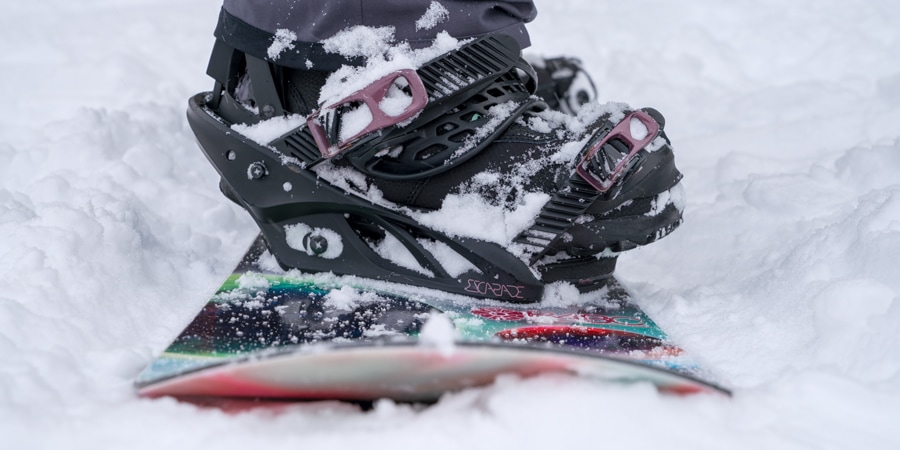
Snowboards come in a variety of widths; to pick the right size, you'll need to see how your snowboard boots fit on the waist of the snowboard. With the right size board, your boots will extend just slightly over the edges of the board (about 1 - 2 cm on each edge) for good leverage while turning. If your board is too wide for you and your boots don't overhang at all, you might have a harder time getting the board from one edge to the other. If your board is too skinny and your toes and heels overhang too much, then you might end up dragging your toes and heels, which could cause you to lose control.
This size chart gives you an approximate snowboard waist width for men's and women's boot sizes:
Snowboard Waist Width (mm) | 235 - 245mm | 245 - 255mm | 255 - 260mm | 260 - 265mm+ |
|---|---|---|---|---|
US Men's Boot Size | 6.0 to 8.0 | 8.0 to 9.5 | 10 to 11.5 | 11.5+ |
US Women's Boot Size | <7.5 - 9.5 | 9.5 - 11 | 11.5+ | 13+ |
Snowboard Shape
Choose the snowboard shape that matches the style of riding you intend to do.
Directional boards are designed to be ridden primarily in one direction and are great for high-speed carving. Many freeride boards and some all-mountain boards are directional.
True twins are symmetrical in construction and exhibit no difference in performance whether you ride them forward or backward. This makes them a popular choice for park and pipe riding.
Directional twin boards are good for people who ride all over the mountain, from groomers to the park.
Additional Snowboard Features
Sidecut Radius
Sidecut radius describes the arc of a snowboard's edge. Imagine if you were able to take a pencil and draw a giant circle that completes that arc. The radius of that circle is sidecut radius.
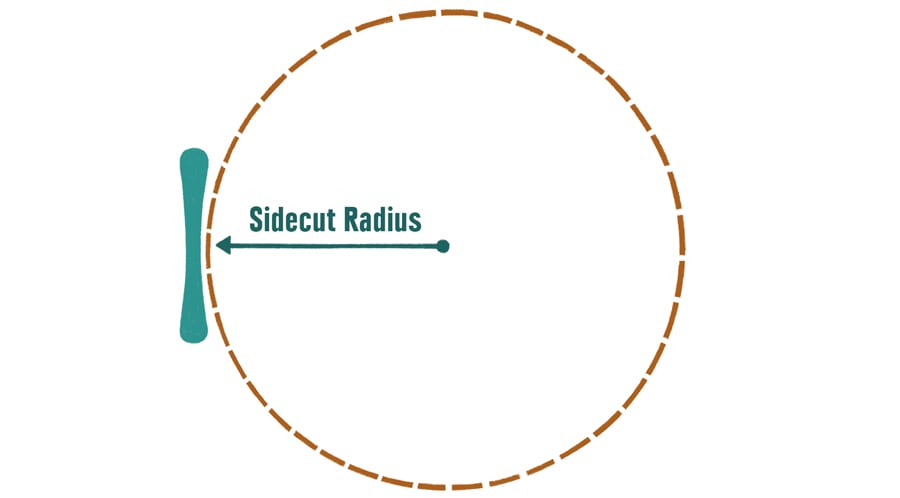
Sidecut radius is expressed in meters and gives you an idea of whether a snowboard is better at making tight turns or big arcing ones. In general, a board with a narrow waist in relation to its tip and tail will have a shorter sidecut radius and can make tighter turns. A board with a wide waist in relation to its tip and tail will have a longer sidecut radius and be better at big, long-radius turns.
Effective Edge
Snowboards have metal edges that bite into snow to provide control and steering. A snowboard's "effective edge" (measured in centimeters) is the edge section that actually touches the snow or ice throughout your descent. The effective edge is always shorter than the length of the snowboard.

A longer effective edge provides stability at high speed and good grip in turns or when descending icy slopes.
A shorter effective edge creates a board that is easier to turn and spin.
Flex
A board can flex two ways. Longitudinal flex is the flex along the board's length (most important to most boarders). Torsional flex is the flex across the board's width.
Soft flex boards are forgiving and easy to turn. They're usually preferred by beginners, riders with lower body weights and park riders.
Stiff flex boards provide more grip when turning and hold speeds better than softer boards. They also hold an edge better when descending fast.
Base Materials
Two types of polyethylene (PE) are used in snowboard bases:
Extruded bases are less expensive, low maintenance and relatively easy to repair, but sometimes vulnerable to warping.
Sintered bases are faster, stronger, lighter and more durable, but more expensive and require waxing.
Binding compatibility
Snowboards offer several different mounting options for bindings. Make sure your bindings and your board are compatible. For more details, see our article on how to choose snowboard bindings.
